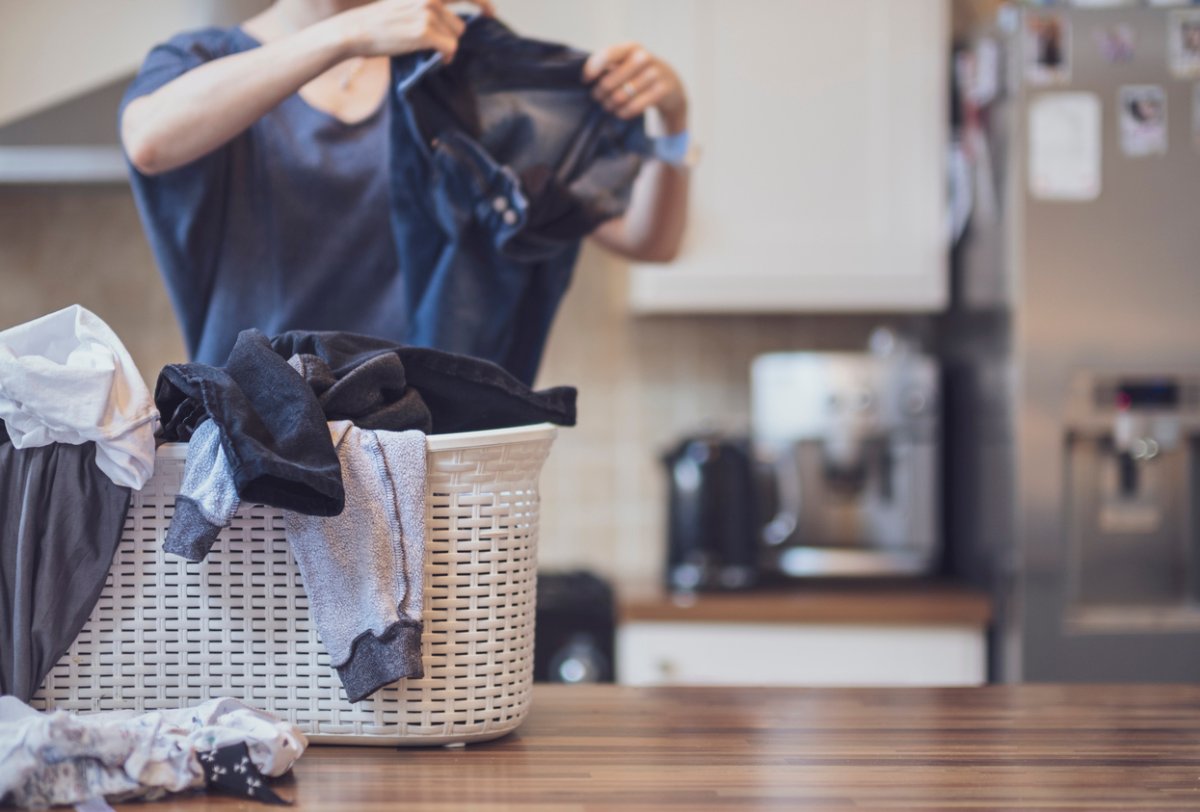

We may earn revenue from the products available on this page and participate in affiliate programs. Learn More ›
You left your favorite sweater in the hamper for too long, and now it’s getting moldy. Do you throw the sweater out, or try to rescue it? Even though mold can seep deep into fabrics, your wardrobe can usually be saved if you know how to clean clothes that have been exposed to mold spores.
Mold and mildew thrive and grow in dark, humid environments, like damp closets, sweaty clothes hampers, and humid basements. If clothing is stored in any of these moist areas, microscopic mold spores can start populating on those clothes. Mold can introduce health risks in your home, including respiratory illness and skin irritation, which is why it’s imperative to know how to remove mold from your clothes and other fabrics.
Want to save your favorite sweats and towels from the trash bin? Follow these steps.
Tools & Materials
Bobvila.com may earn a commission from purchases made through these links.
Project Overview
Working Time: 15 minutes
Total Time: 2 hours and 15 minutes or more, depending on drying time
Skill Level: Beginner
Estimated Cost: $5–10
Before You Begin
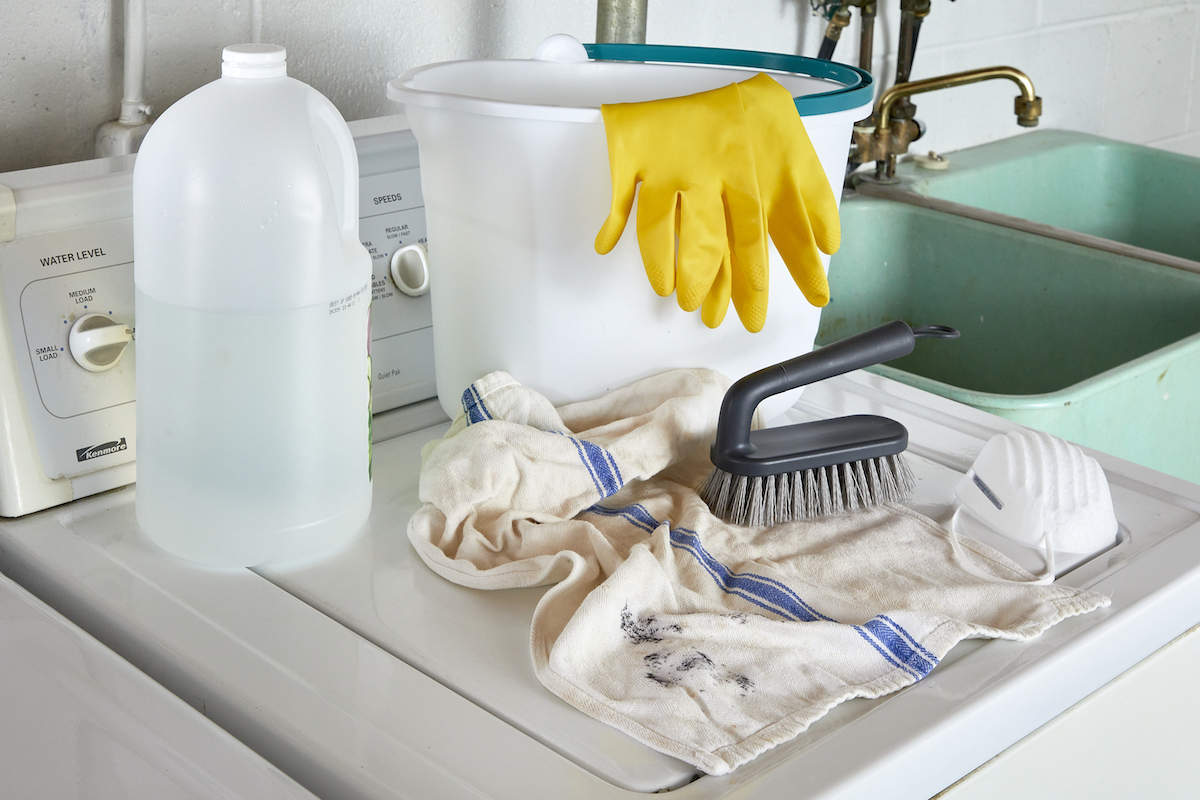
Moist, dark places are breeding grounds for mold. Prevent mold from forming on clothing in the first place by keeping up with the dirty laundry, and add ventilation to any humid areas in your home where your laundry is kept.
Each type of fabric has its own wash instructions, so always check the label before using any chemicals or cleaning products, lest you cause additional damage to a garment. Washing instructions on the label should supersede the instructions listed below.
If you can, try to tackle this chore on a sunny day, as exposure to ultraviolet (UV) rays can help kill off the mold.
Step 1: Pretreat and scrub the clothing.
Once you discover mold on your clothing, check other garments nearby to see if they have been affected, and then gather all of the moldy items. If the clothes are still damp, lay out the clothing in the sun (if it’s shining) to start killing the mold. If this isn’t possible, bring the moldy garments into a room that’s well-ventilated to the outside and open any windows. Close any vents that lead to the rest of the house to prevent mold spores from spreading.
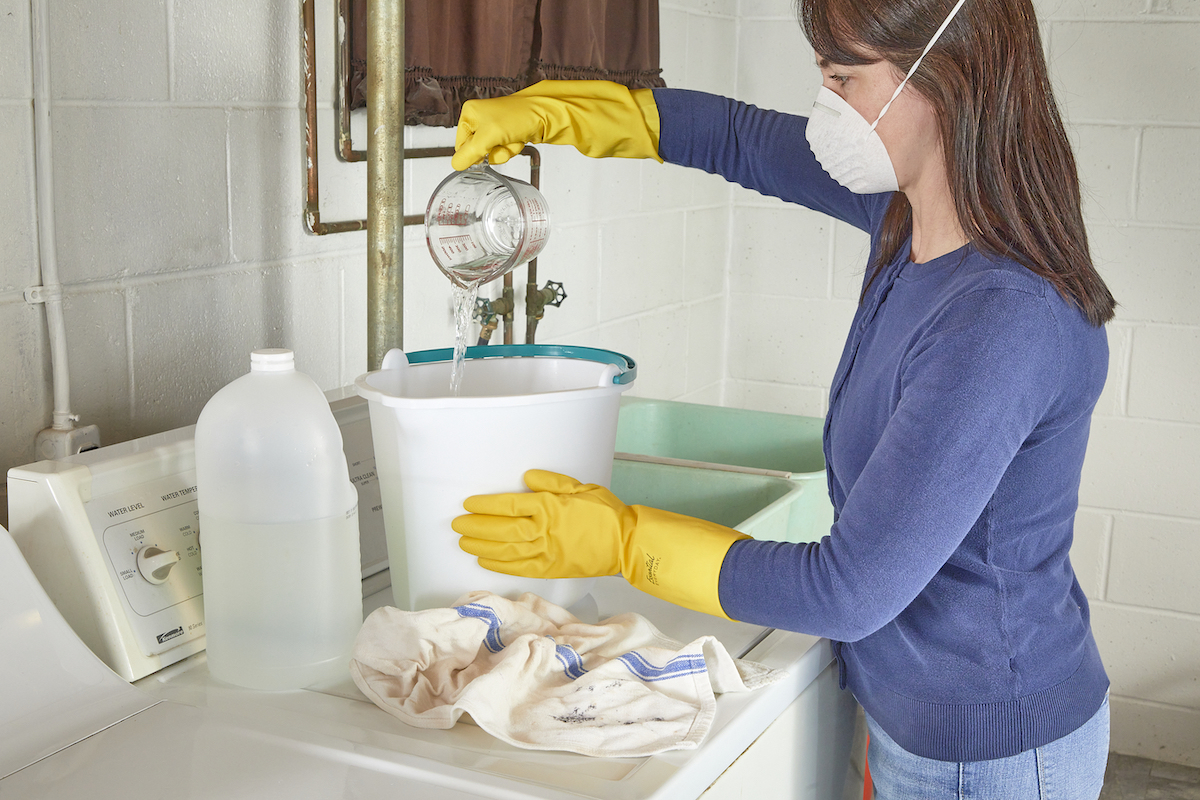
Put on a mask and cleaning gloves to prevent breathing and skin irritation while cleaning. Soak the moldy clothing in a bucket mix of water and either ½ cup of Borax or 1 cup of white vinegar, allowing it to sit for at least an hour. After soaking, use the scrub brush to clean the moldy stains on clothing. Scrub hard enough to clean the moldy areas but not so vigorously that you damage the fabric.
Step 2: Put moldy clothing in the washing machine, and add Borax or vinegar.
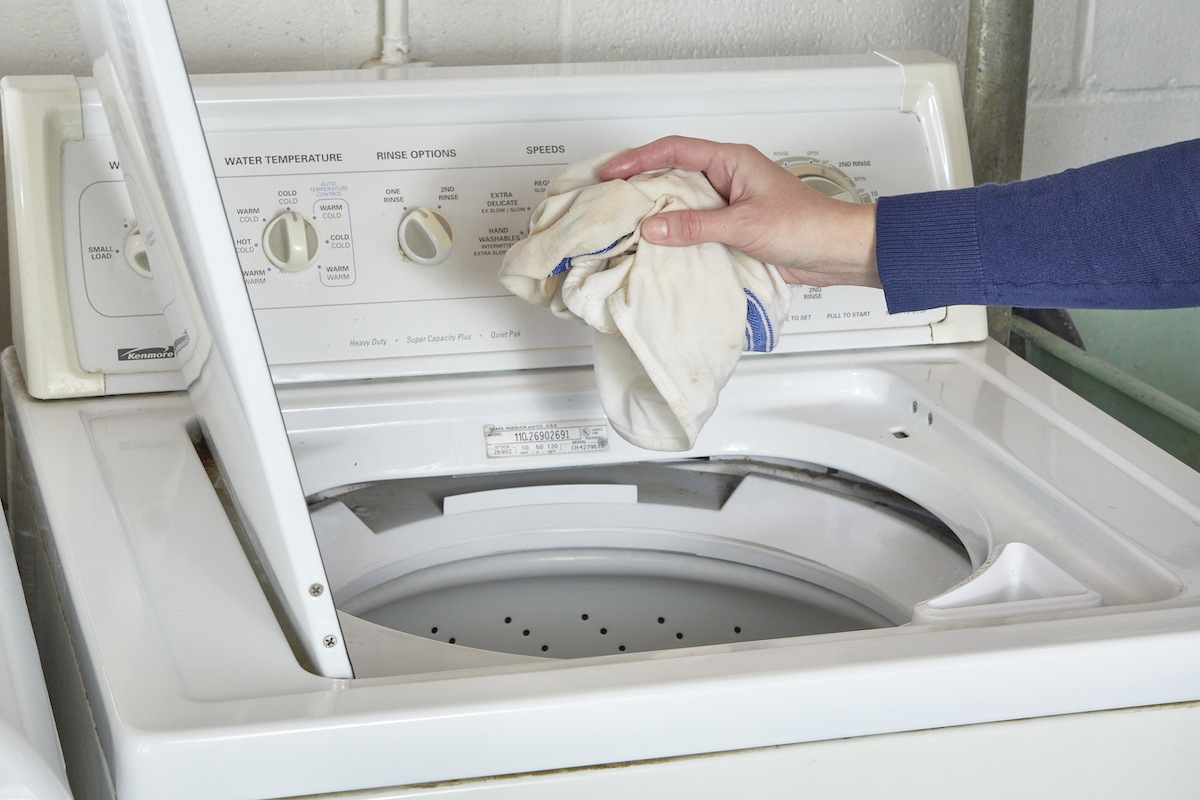
The next step in how to get rid of mold on clothes involves using either Borax or white vinegar in the washing machine with your moldy clothes. For both methods, use laundry detergent (as directed) on a hot water cycle, as the heat helps kill the mold. Reduce the smell of mold by adding ½ tablespoon of baking soda to the laundry load, as it helps naturally deodorize clothing.
If you are using Borax, follow the instructions on the box. Another way to use Borax in the laundry is to mix ½ cup of it with a cup or two of hot water until it becomes a liquid solution, and then add the mixture to the washing machine. If you have a top-load washer, add the Borax solution after the washing machine fills with water.
Vinegar naturally helps remove the mold smell from clothes and can kill most mold species, including those that usually live on fabrics. Add clothing, laundry detergent, and 1 to 2 cups of vinegar (for small and large loads, respectively) to the washing machine to clean those moldy clothes.
RELATED: 5 Fixes for Mold in Hiding in Your Washing Machine
Step 3: Dry clothes completely, ideally in direct sunlight.
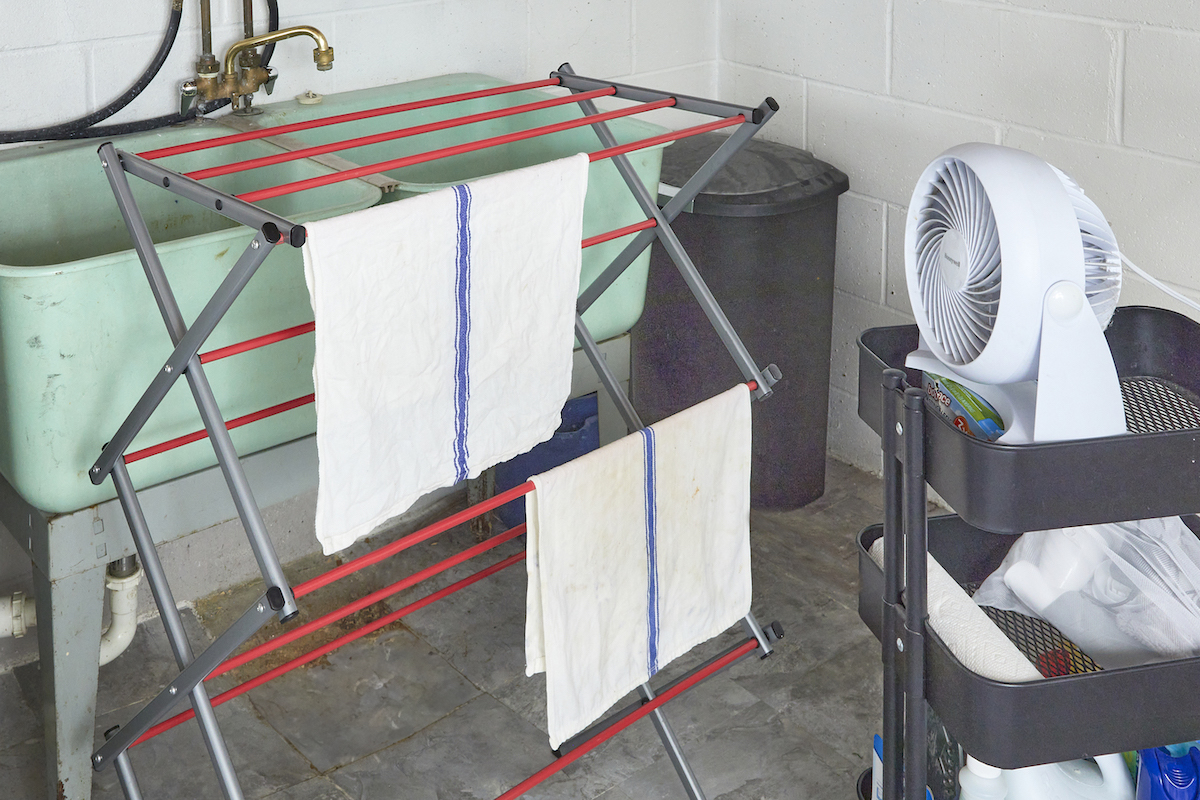
If you can, line dry your clean clothing in the sun. UV rays and the additional heat from the sunshine help kill off any remaining mold and mildew.
On cloudy days or in cooler weather, use the dryer settings that work best for your fabrics, keeping in mind that warmer temperatures kill off mold more effectively. Completely and thoroughly dry the clothes, as any moisture on the clothing can bring the mold back.
RELATED: How to Strip Laundry the Right Way
Step 4: Inspect clothing for mold, and smell it to make sure it’s clean.
Give your clothing a once-over to make sure all of the visible signs of mold are gone. Sometimes mold persists through the first three steps, which can be repeated, if necessary. If you find that you have to repeat the steps two or even three times, presoak it longer and scrub the fabric more thoroughly.
If you can’t see mold, sniff the garment. A musty or earthy aroma means there’s probably still mold present. Depending on how strong or faint the smell is, repeat steps one through three, or skip pretreatment and instead rewash and dry the clothing.
RELATED: How to Make Your Own Laundry Detergent
Step 5: Store your clothes in an area that is clean, dry, and well ventilated.

After going through the cleaning process, don’t undo all your hard work by leaving your clothes in the dryer or laundry basket. Once you are satisfied that your clothing is clean and mold-free, fold it and put it away. A dry area, ideally one that gets some form of air flow, is the best place for clean clothing.
Never leave freshly laundered clothes in moist areas where they can develop mold again. If you discover moldy clothing in your laundry hamper, use disinfectant to kill off any lingering mold spores before putting more dirty clothes inside.
Step 6: Address any sources of mold to prevent further contamination of your garments.
Hopefully, your next order of business is nothing more than addressing a habit of leaving damp or sweaty clothing in the laundry bin for too long. Get in the habit of either washing your wet laundry immediately, or allowing dirty damp clothes to dry out before throwing them in the hamper.
If a leaky pipe, window, or roof allows water into an area that clothing is stored, it can in turn cause a moldy clothes problem. While addressing and fixing the cause of the leak, move your clothing to a different location. There may not be a leak, but some closets or storage areas happen to trap moisture. This can be addressed with silica gel packets to suck up the moisture and extra ventilation with an open door, air conditioner, or fan.
RELATED: How to Get Mold Out of Carpet
Final Thoughts
If all goes to plan, this primer on how to get mold out of fabric will solve your mold issue and allow you to keep and rewear the affected items. Of course, the best way to keep mold off clothes is to prevent it from forming in the first place. If you store dry clothing away from humid or damp areas, mold is less likely to take hold. If you discover mold on your clothing, take care of it immediately.
